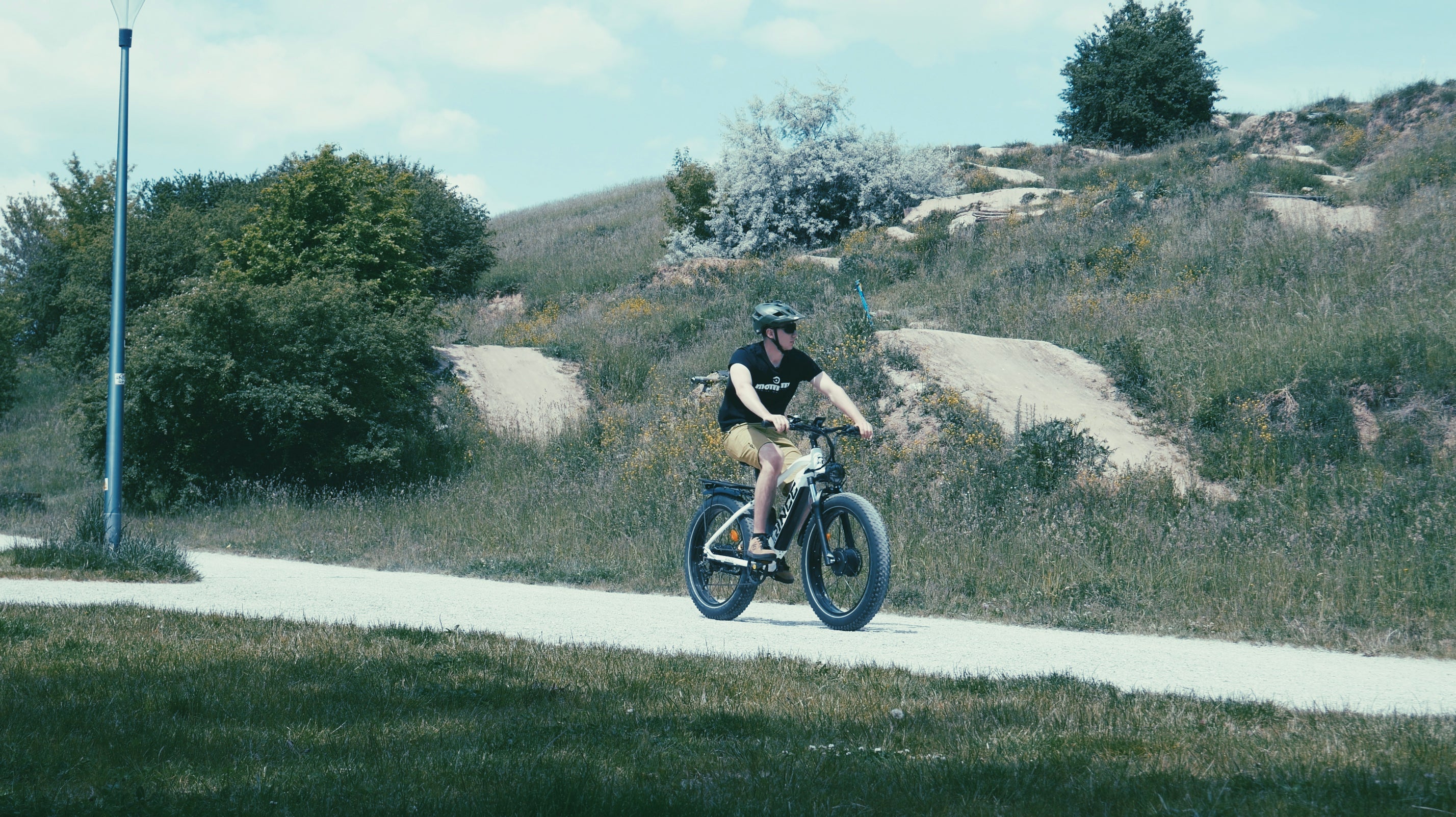If you're transitioning from a standard bicycle to an electric model, the process isn't as complicated as it may seem—but with so many options, choosing the right one can be daunting. This guide will walk you through the essential factors to consider, highlighting how Rincc e‑bikes align with different needs and preferences.
Why Choose an E‑Bike?
Transitioning from a traditional bike to a Rincc e‑bike opens up new possibilities: effortless ascents, longer rides, smoother commutes, and enhanced fitness—all without breaking a sweat. Whether riding city streets or rugged trails, selecting the right e‑bike unlocks freedom and fun.
E‑Bike Fundamentals
All Rincc models include:
-
A motor (hub or mid-drive, typically up to 750 W on models like RN50)
-
A lithium-ion battery
-
A handlebar display/control unit
-
A pedal-assist system with selectable power levels
These systems engage your pedal stroke—easier at low assist, gentler on the battery; powerful at high assist, ideal for hills but shorter range.
Step 1: Budgeting Wisely
E‑bike prices vary widely:
-
Entry-level (€500–800): Good for commuters, basic components
-
Mid-range (€800–1200): Enhanced battery, smoother ride, better brakes
-
Premium (>€1200): Dual motors (e.g., RN70), higher torque, full suspension
Rincc delivers excellent mid-range value, powerful enough for most riders.
Step 2: Define Your Riding Terrain
-
Urban commuting: Opt for compact 20–26″ models like the R200—agile and practical
-
Trail/Adventure riding: Consider full-sized 26–29″ models with suspension like RN70
-
Errands & gear: Choose models with cargo racks or long-tail options
Step 3: Battery Life & Range
Range depends on terrain, assist level, and rider weight:
-
Typical range: 30–100 km
-
For example, the RN70’s 20 Ah pack delivers ~100 km in pedal assist mode
-
Want extra range? Look for options supporting dual batteries or swappable packs
Step 4: Choose the Right Class
Understand e‑bike classes for compliance:
-
Class 1: Pedal-assist only, up to 25 km/h (EU) or 20 mph (US)
-
Class 2: Includes throttle, same speed limits
-
Class 3: Pedal-assist up to 45 km/h (28 mph)
Most users should start with Class 1—legal and low-maintenance
Step 5: Motor Placement & Power
-
Hub motor: Quiet and simple; ideal for flat commuting
-
Mid-drive: Better torque and balance; great for hills and cargo
-
Dual-motor: Seen in models like RN70 for maximum power and stability
Match torque (Nm) and wattage (e.g., 250–750 W) to your terrain and load needs.
Step 6: Wheel Size Trade-offs
Choose based on the terrain and portability:
-
16–20″ wheels: Compact and nimble—great for folding commuters
-
26–29″ wheels: Smoother ride, better efficiency, more stable
Selecting the right size enhances your ride quality.
Step 7: Key Features Checklist
Prioritise these factors:
-
Battery capacity (Wh) and range
-
Motor type and torque output
-
Display quality and usability
-
Integrated support features (lights, racks, suspension)
-
Hydraulic vs mechanical brakes
Rincc models feature hydraulic brakes and high-quality rigs, boosting safety and ride experience.
Step 8: Try Before You Buy
-
Test ride multiple models to experience handling, comfort, and assist
-
Check service support—Rincc is known for good customer care, as noted on Reddit
“Since getting the RN50, I ride 30‑60 miles daily… It’s transformed my health”—a user wrote, highlighting continuous range excellence
Step 9: Buying Decision Flow
-
Set a realistic budget
-
Match model to terrain (urban, trail, cargo)
-
Select class and motor setup for legal and ride needs
-
Choose wheel size and battery pack for your commute length
-
Test ride and inspect support options
Step 9: How Rincc Matches These Criteria
Rincc’s range aligns with different cyclist profiles:
-
RN50 (All-Terrain/City/Travel): 750 Wh battery, 29″ wheels—comfy and fast for urban trips.
-
RN70 (All-Terrain/Off-road): 26″ wheels, full suspension—perfect for hybrid commuting and trails.
-
R200 (All-Terrain/City/Commuter): 20″ fat tyres, foldable mid-drive—suited for adventure transport.

Final Recommendation
With the right foundation, choosing your first Rincc e‑bike is straightforward:
-
Decide your daily use: pace and terrain
-
Set a budget that aligns with features you need
-
Test ride to find the best fit
-
Consider follow-ups like warranty and parts availability
Explore the full Rincc range at www.rinccbike‑eu.com, and start your journey with the perfect electric ride!


Share:
Does Using An Electric Bike Count As Cheating?
How Do You Keep Your E-Bike Battery in Good Condition?